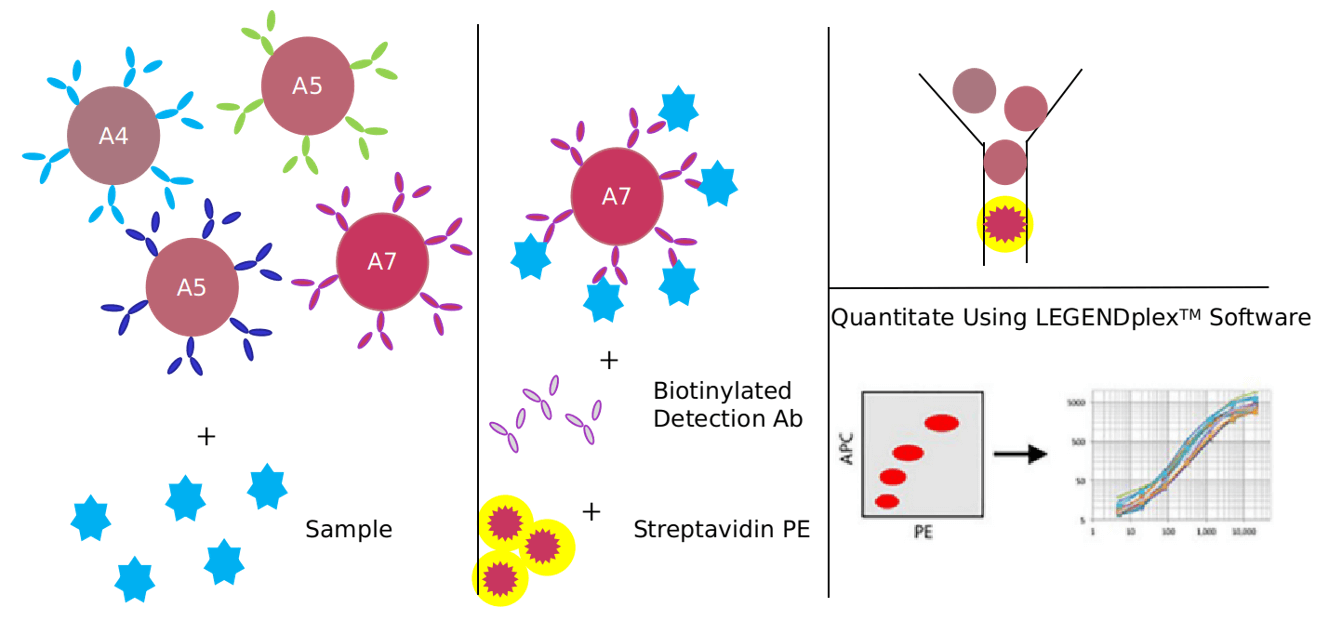EGF/EGFR signaling pathway
Based on Luminex technology platform, Creative Proteomics provides analysis services for key targets of EGF/EGFR signaling pathway.
Epidermal Growth Factor Receptor (EGFR) is a receptor for epithelial growth factor (EGF) cell proliferation and signaling. EGFR is a glycoprotein located on the surface of the cell membrane and is a tyrosine kinase-type receptor that is activated by binding to ligands. EGFR is associated with tumor cell proliferation, angiogenesis, tumor invasion, metastasis and inhibition of apoptosis.
 (Kandasamy, K, et al., 2019)The EGFR signaling pathway is one of the most important pathways regulating mammalian cell survival, growth, proliferation and differentiation. EGFR transmits growth-promoting signals intracellularly upon stimulation by its ligands (TGF α and EGF). Under normal conditions, the number of EGF ligands is tightly regulated and, as a result, cells tend to proliferate at a slower rate than required by the tissue. However, EGFR signaling is often permanently stimulated in cancer, mainly due to overproduction of TGF-α or EGF in the tumor microenvironment; or due to mutations in EGFR itself resulting in sustained activation of downstream signaling pathways.
(Kandasamy, K, et al., 2019)The EGFR signaling pathway is one of the most important pathways regulating mammalian cell survival, growth, proliferation and differentiation. EGFR transmits growth-promoting signals intracellularly upon stimulation by its ligands (TGF α and EGF). Under normal conditions, the number of EGF ligands is tightly regulated and, as a result, cells tend to proliferate at a slower rate than required by the tissue. However, EGFR signaling is often permanently stimulated in cancer, mainly due to overproduction of TGF-α or EGF in the tumor microenvironment; or due to mutations in EGFR itself resulting in sustained activation of downstream signaling pathways.
Epidermal growth factor (EGF) is one of the high-affinity ligands of EGFR. The EGF/EGFR system induces growth, differentiation, migration, adhesion, and cell survival through a variety of interacting signaling pathways. The binding of EGF to the extracellular domain of EGFR induces dimerization, activation of intrinsic kinase activity and subsequent autophosphorylation of EGFR at multiple residues in the cytoplasmic region. Activated EGFR recruits various cytoplasmic proteins that transduce and regulate EGFR function. EGFR also activates phospholipase C, and one of the PKC-regulated signaling modules in the EGFR pathway is the NFKB module. Other signaling modules activated by EGFR include FAK, JNK, p38MAPK, and ERK5 modules. EGFR induces the JNK pathway through activation of G proteins such as RAC and CDC42. As growth, differentiation and cell survival factors; mutation and overexpression of EGFR and defective regulation of its signaling pathways have been shown to be associated with tumorigenesis. Therefore, EGFR and its signaling components are promising targets for the effective treatment of various cancers.
Our detectable targets:
| Bcl-xl | ISGF3 | TRAF-2 | FADD | APAF-1 | BID |
| Histone-H3 | IRF5 | MEK3 | p38MAPK | SH2 | TRAF6 |
| IPS-1 | mTOR | MSK2 | PI3K | TBK1 | Vav |
| BAK | Bax | ISRE | MYD88 | Rac1 | TLR4 |
| PKR | TLR3 | IAPs | tBID | SODD | Bad |
| FADD | IRF7 | Mda-5 | NFκB | RIG-1 | TRAF3 |
| PIDD | IRS2 | MSK1 | p65 | Tak1 | TRIF |
| RIP1 | IRS1 | MEK6 | p50 | SLP76 | TRAM |
| GAS | IRF9 | MEKK1 | p38 | RIP1 | TRAF5 |
Technology platform:
We provide Luminex technology for EGF/EGFR signaling pathway analysis.
Luminex technology is a multifunctional liquid phase analysis platform developed on the basis of laser technology, colored microspheres, high-speed digital and applied fluidics signal processing technology. The core is polypropylene microspheres encoded with magnetic microspheres or fluorescent dyes. By adjusting the different ratios of the two fluorescent dyes, more than 100 microspheres with different fluorescence spectra can be obtained. Perform ligand-receptor, enzyme-substrate, antigen-antibody binding reactions and nucleic acid hybridization reactions on microspheres with different fluorescent codes. Quantitative and qualitative analysis of microsphere encoding and reporter fluorescence were performed by laser detection.
EGFR is a receptor that can be activated by EGF or TGF-α. Upregulation of EGFR protein is associated with different types of cancers, especially breast cancer. EGFR antagonists have emerged as a major target for therapeutic interventions in cancer.
In addition to Luminex multiplex assay, enzyme-linked immunosorbent assay (ELISA), flow cytometry (FACS analysis) technology can also be provided to meet other customer needs.
Advantages of EGF/EGFR signaling pathway detection:
- High-throughput: Simultaneous analysis of multiple target molecules in the same sample. Theoretically, the detection flux is equal to the number of types of microspheres, that is, up to 100 types.
- Low sample consumption: Because 100 different target molecules can be detected in the same reaction well at the same time, the amount of sample is greatly saved; and because of the small size of the microspheres, as little as 1 puL of samples can be detected.
- Low cost: Simultaneous detection of multiple indicators of a sample can save time, samples, reduce detection costs, and improve analysis efficiency.

Application of our service:
- Study the regulatory mechanism of EGF/EGFR signaling pathway in medicine
- Research on the influence of various pathogens on EGF/EGFR signaling pathway
- Study the effect of clinical drugs on EGF/EGFR signaling pathway
Creative Proteomics has developed a signal path target detection platform. We can not only provide customers with EGF/EGFR signal path detection services, but also other signal path detection services. If you want to detect other targets, please contact us in time, we will customize the service for you according to your needs. Looking forward to working with you.
References:
- Kandasamy, K., Mohan, S. S., et al. NetPath: A public resource of curated signal transduction pathways. Genome Biology, 2019, 11: R3.
- Liu Q, Zhang J, et al. Role of EGFL7/EGFR-signaling pathway in migration and invasion of growth hormone-producing pituitary adenomas. Science China(Life Sciences), 2018.



